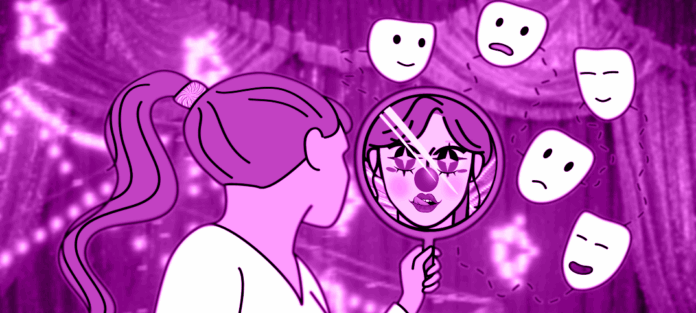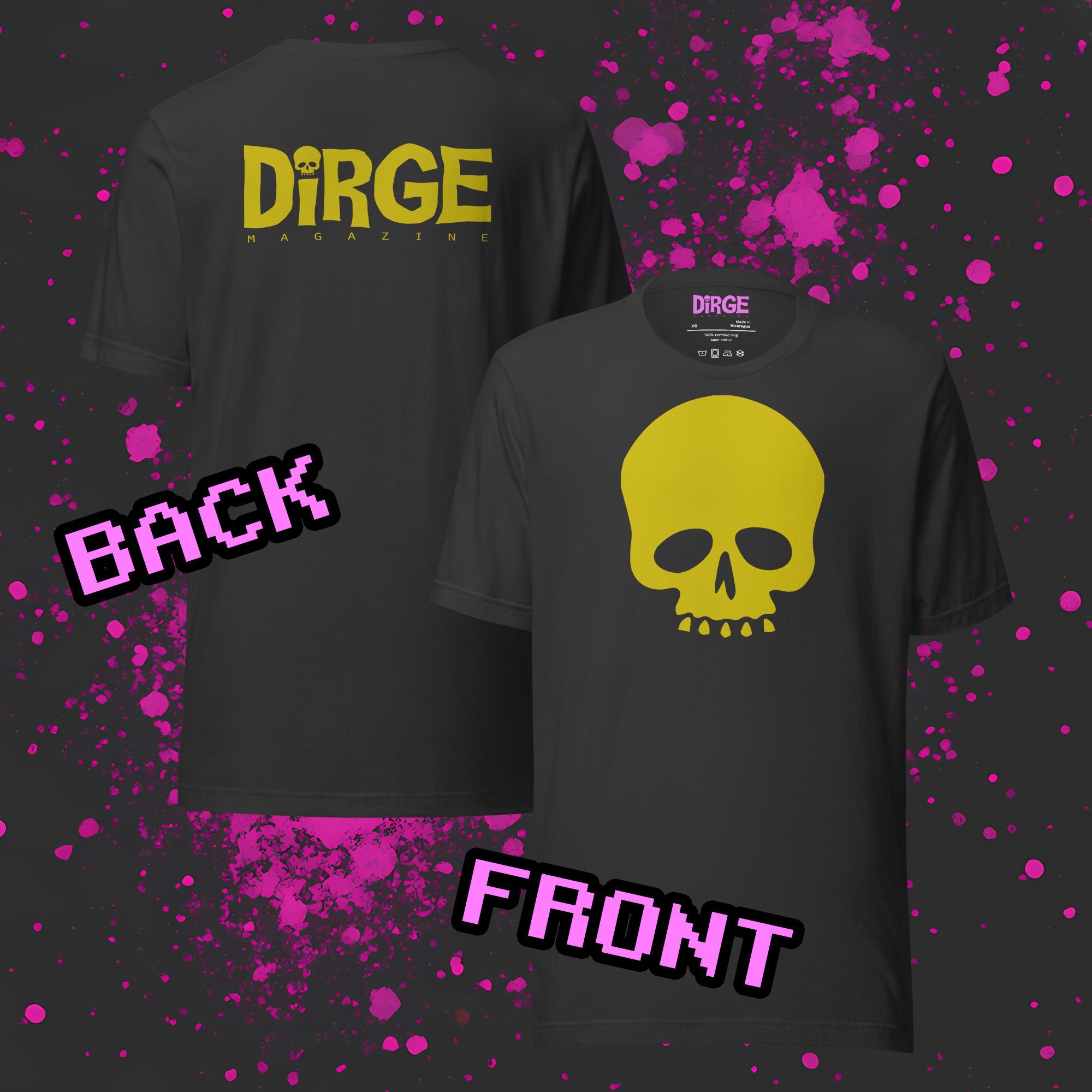Humankind has Required the Clown since time immemorial … or approximately 2400 BCE. So, somewhat memorial.
As far as historians can reckon, this nearly precise date marks when the honking bays of jesters first broke across the horizon. Clownery entered our world with comic royal court entertainers making their debut in the Fifth Dynasty of Egypt. I won’t bore you with a bunch of ancient clown history since we all know why you’re really reading this, but spin a globe and you’ll find that almost any area you stick a pin in has had some form of uniquely decorated trickster deeply ingrained in the local culture.
Clown power is mysterious. According to one recent study, over half of a sizeable global sample reported they greatly fear the clown, yet this cultural character remains a mainstay. A strong line of expressly bawdy clowning can be traced from antiquity to today, often as accepted public erotic display in cultures where such behavior would be otherwise prohibited. Based on this historical record, we can surmise that this figure is a necessity for exploring taboo, upending authority, and truth-telling. The ostentatiously transgressive jester is one of those ubiquitous things like ghosts or vampires. Everybody’s got ‘em, everybody wants ‘em—or doesn’t.
Nobody could really decide on one look marketable to audiences until the standard greasepainted performer we think of today was created by Joseph Grimaldi in the early 19th century. Crowds saw this image and were like, “Holy shit, we cannot get enough of this weird guy!”
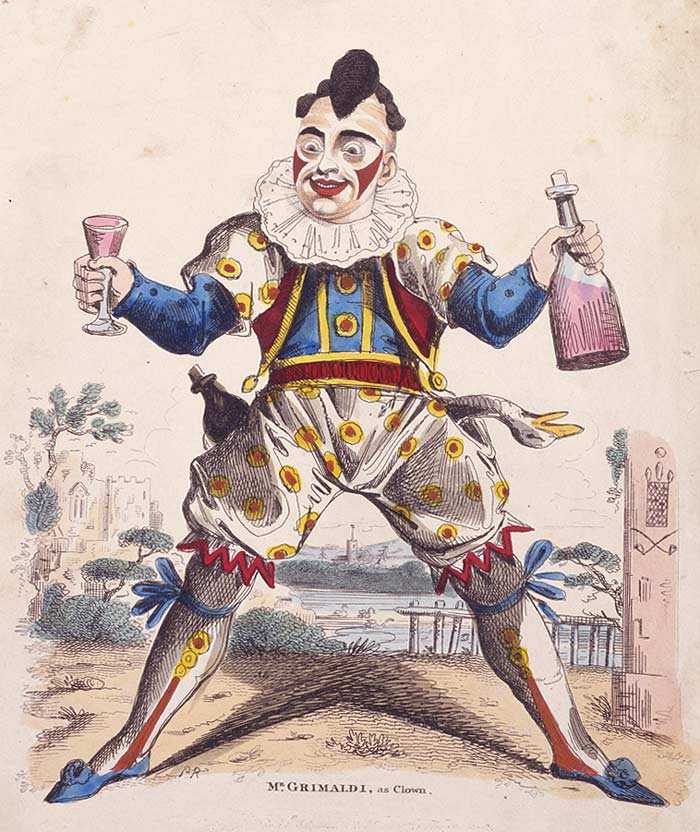
Note: If you find yourself wanting to delve deeper into historical clown theory, we recommend a scroll through this delightful interactive online exhibit on The Paradox of the Fool by The Metropolitan Museum of Art.
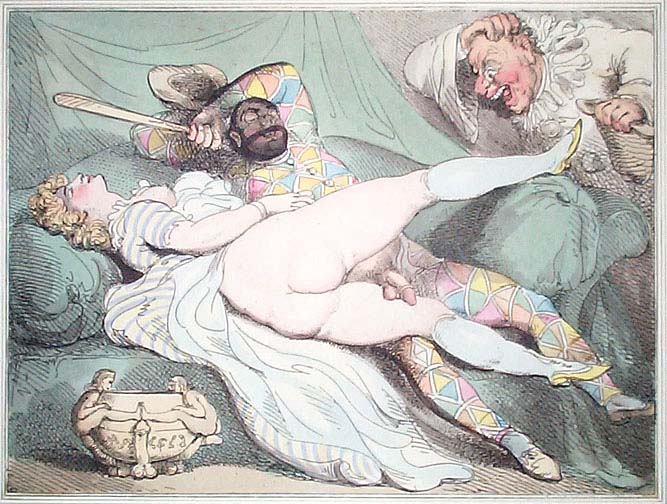
While we are blessed with plenty of resources detailing a wealth of examples of adult clowning through the eras, there’s very little exposition to be found on modern attitudes and experiences with this playful art form. I found myself asking: What about the hot harlequin holds our attention today? Why are clown girls capturing hearts everywhere online? Are they still as essential to today’s world as they were in ye olden times?
My dear Dirge readers, as your resident carnivangelist with a yearning to explore these questions, I’ve spun a capricious cotton candy tale for you with three personal accounts: A tale from a randy fellow who converted from clown-fearing to clownfucking, my own kaleidoscopic odyssey with clowning, and a featured interview with the illustrious Maggie McMuffin—a prolific artist and adult clowning performer.
We hope even the clown-averse will suspend the mask of dread and tune into the calliope of beautiful chaos that is the world of erotic clowning.
HUMANKIND STILL WANTS TO FUCK CLOWNS
In recent years, it’s become hard to scroll social media on any kind of cosplay, horror, or “hot alt” algorithm without coming across, well … let’s look at a few examples!
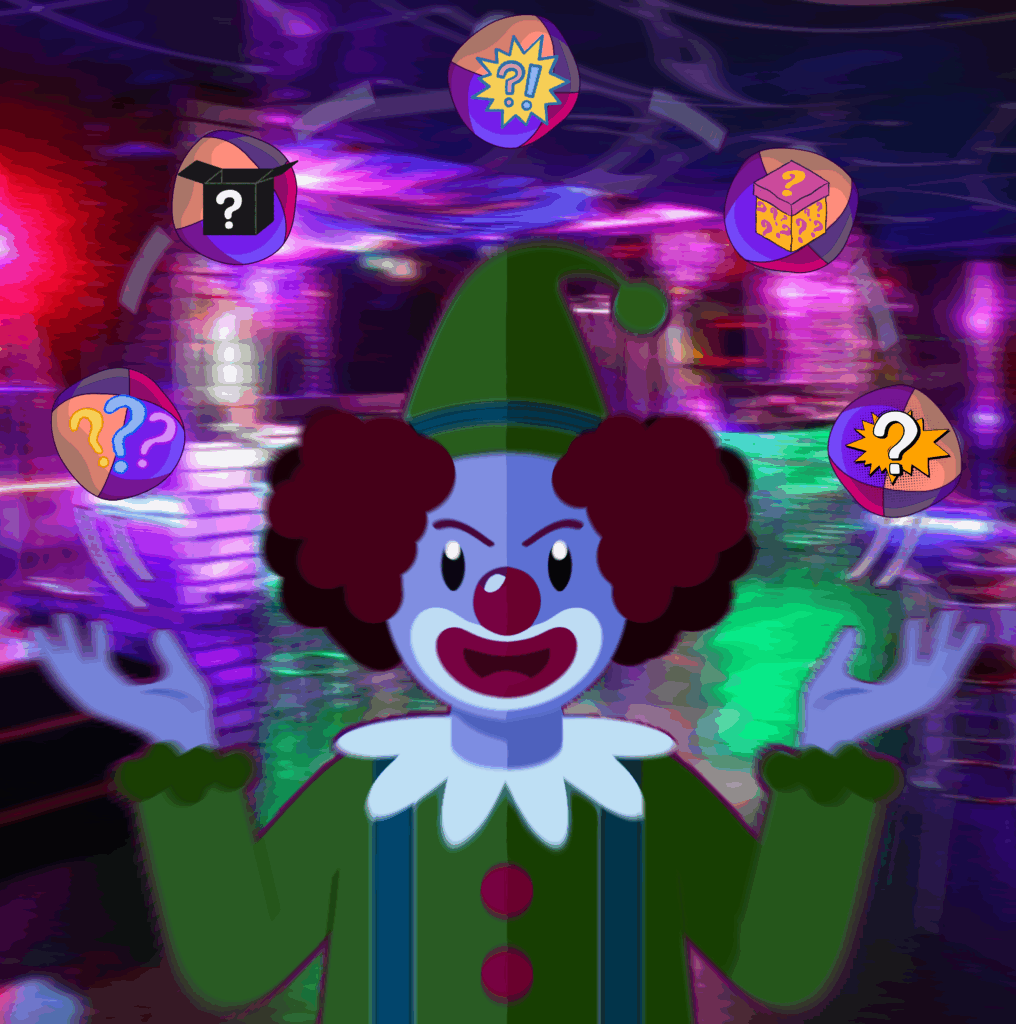
- Daring Harley Quinn cosplay
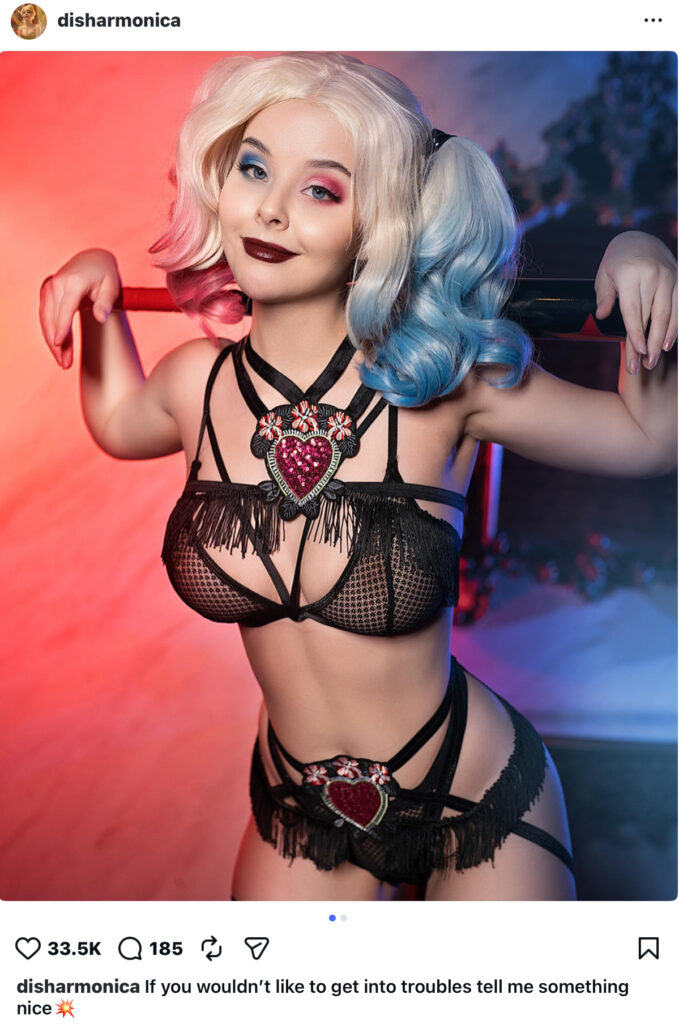
- Art the Clown thirst traps
- Pennywise x Reader fanfic

- Clown ASMR videos doing incredible numbers
With the rise of subscriber/premium access independent creator platforms has also come professional e-sex jesters, not to mention the meatspace continuation of burlesque and sideshow traditions featuring a plethora of erotic clown business.
Before we continue, it’s a honkin’ good time to mention that with anything remotely related to this realm, you chance running into the favorite genre term: CLUSSY, a delightsome portmanteau of clown and pussy. Once you hear it, it’s hard to forget it. Clussy. C-l-u-s-s-y. Kh’luhh-see. Clussy Fever.
Do you love the clown? Hate the clown? We’d love to hear your thoughts and experiences on our social media.
Instagram: instagram.com/dirge.magazine
Facebook: https://www.facebook.com/dirgemagazine
Discord: https://discord.gg/CNR6KVAQSs
But why are we SO hot for clowns today?
TikTok clown girls are way too popular for their appeal to only entice the minority of people who aren’t terribly afraid of clowns. In an article entitled “The queering relief of the humor in the new burlesque,” Dr. Joanna Staśkiewicz makes the case that humorous transgression destabilizes beauty and gender norms, allowing people to safely experience desire for something they might otherwise find frightening. Mixed into the primordial miasma in our brains is a fun machine that turns fascination and aversion into desire.
With this analysis in mind, I ran Google trends for the search “clown porn” over the past 10 years and discovered 3 notable uptick trends for which I propose likely correlations.
- Clown murders/sightings/panic in 2016
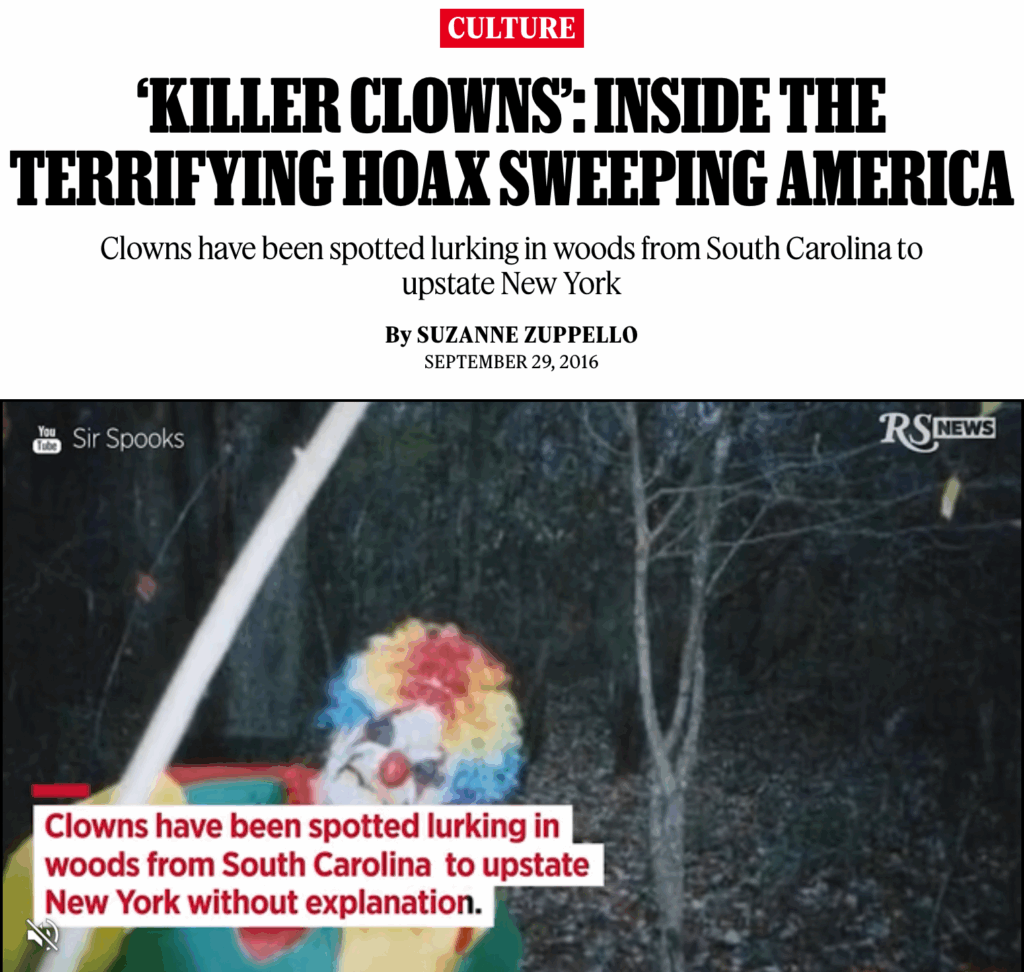
- IT remake releases (It in September 2017 and It: Chapter 2 in September 2019) Remember the number of Pennywise x Reader erotic tales on the Ao3 website alone? Well, there are tons more on Tumblr and Literotica. I used to follow an account called pennywise-can-dick-me-down that sadly no longer exists. We sure love that alien clown, apparently as much as Stephen King loves Maine.
- Current uptick: Aforementioned TikTok clown girls, starting with the 2021 highly memeified ”clussy” trend. It’s probably not a coincidence that this timeline matches up with political instability as well. We get weird when things get weird.
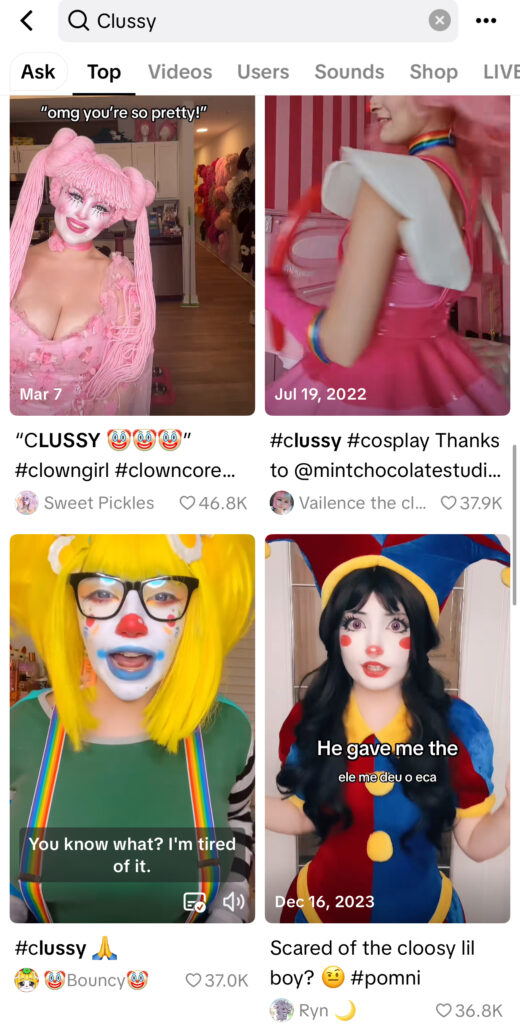
What instigates the fear of clowns, usually stemming from childhood (officially termed coulrophobia), cannot be nailed down to a single cause. Scientific investigations name multiple factors like the uncanny valley effect, media portrayals, and unpredictability of behavior.
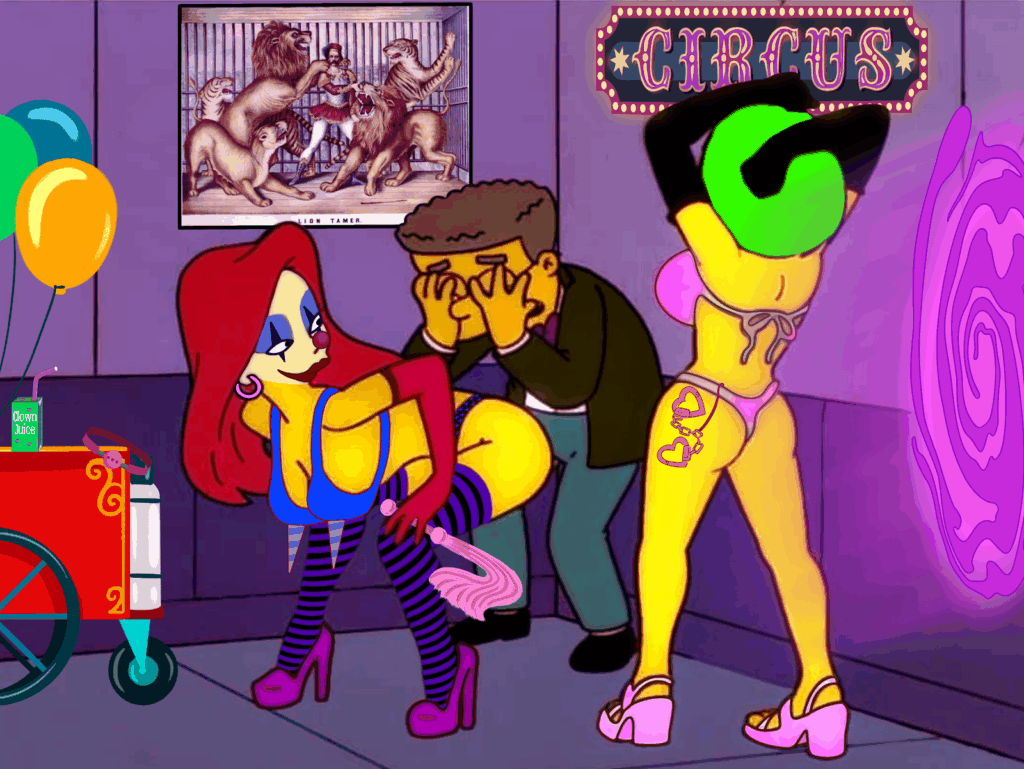
Unscientifically speaking, my own anecdotal scrutiny has led to a conclusion that premature viewing of the Tim Curry IT mini series was to blame for a great number of my peers. For people older than Millennials and young Gen Xers, I could only guess that the terrifying children’s costume performers you see in viral “Remember this???” Facebook posts have something to do with it.
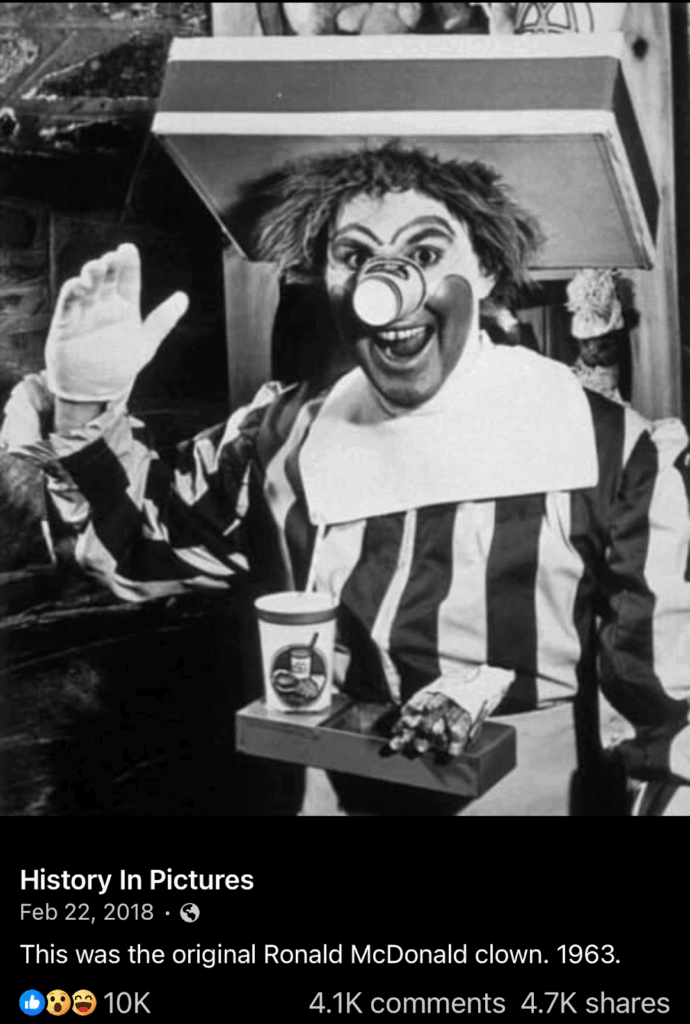
Indubitably, we have the Generation Gap Clown Maxim: Either you saw IT at age 8 and had nightmares, or you enjoyed clowns at age 8 and then saw IT at age 15, causing you to look back on your birthday party like “…euuugh.”
To test this generational theory, I spoke with one male coulrophiliac (clown-lover) who would fall into the latter category: A Juggalo who considers himself a relatively recent clown convert. Agreeing to share his experience with Dirge on condition of anonymity, he was kind enough to detail his own experience on the path from disgust to desire. We will call him “Mr. Giggles.”
Speaking to Dirge, Mr. Giggles explained how his early disgust was fomented:
“I was exposed to clowns as a kid with tv shows (Howdy Doody and Bozo’s Circus come to mind) and trips to Ringling Bros. That was okay—the circus clowns. I did not like the ‘hobo clown’ style collectibles that were popular in the 70s, though. The biggest offender for me as a little boy was my mean Aunt Mary, who had a particularly disturbing and massive ceramics collection.
The worst piece was in her guest bathroom: A dejected looking clown with his pants around his ankles. In place of a penis, he had a large phallic cactus extending up. My family all got a good laugh out of that, but every time I had to use her bathroom I found myself scowling at the cursed statuette. Confronted by his sad erection, I resisted the urge to shatter the bastard. In retrospect, as an adult with more words to describe what bothered me, part of the trouble was how fucking classist it felt: Aunt Mary had a well-paying bank job, but liked to laugh at a dejected looking guy in tattered rags.”
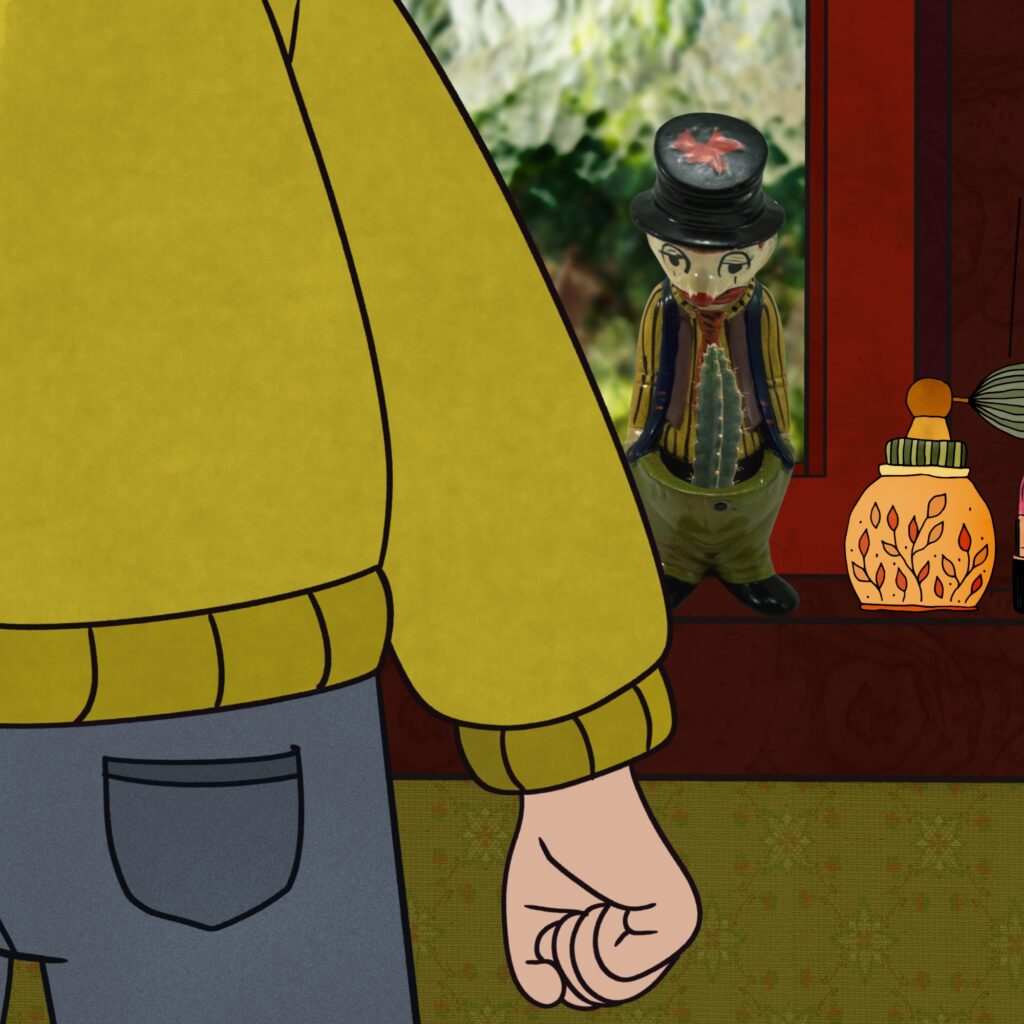
When Mr. Giggles became a teen, it was the 1980s, and media portrayals of clowns were quickly changing. He felt that Joker in the live-action Batman TV series used to be just funny, but when Tim Burton got ahold of him, he became a menacing character. Of course, this was also the time of Stephen King and Killer Klowns from Outer Space. The advent of horror clowns prompted the young Giggles to have an internal revelation:
Wait, that clown I see at the circus is actually a man. I am becoming a man myself. Why is this grown man putting on face paint and entertaining children?
It was a weird dynamic for him and his entire peer group. The first thing to break this negative mold was PBS, which broadened his horizons with education on opera and other reasons men may wear makeup. Naturally, he started to get into bands like KISS. While those guys had over-the-top looks, their audience wasn’t comprised of children, so it didn’t cross into creepiness for him.
Mr. Giggles had a big change to his “clown-view” when Insane Clown Posse came on the scene. In 1997, The Great Milenko was released, which he initially viewed with derision on account of feeling like they looked like a KISS knockoff band. However, after giving them a listen, what stood out to him the most was the album’s themes of societal retribution.
They had strong “we are clown guys who love to hunt down pedophiles” messaging so I was able to kind of shift in my view of male clowns from “ugh” to “okay, cool, we’re doing this.” Not scary anymore, actually badass. Loved the Dark Carnival.
As a horrorcore group, ICP’s messaging overall is a complex subject. But Mr. Giggles saw a new music scene that also happened to have a lot of cool women participating while donning clown makeup, which veritably rewired his brain. He noted to me that this was around the same time Party City began to carry costumes of the “sexy clown” variety, making the look accessible to all. Before this era, ladies in clowning largely wore billowy artistic theater clothing. The feminine alt energy in the 90s and 2000s revealed a cultural yearning for more open sensuality.
The visual inputs of cute jestering turned up to a fever pitch. As a burlesque fan, Mr. Giggles begin seeing an increase in clowning acts. Batman: The Animated Series had him falling in love with Harley Quinn.
Surface level, she’s hot. But also, she is the sanest person in Gotham, with a sense of moral clarity that works because she can operate between worlds.
Mr. Giggles became active in the anime convention scene. An uptick in the frequency of sublime mimes at cons expanded his attention to the topic further, and he was thrilled to support cosplayers he was dating in their related greasepaint indulgences.
I think my experience is very common; there are probably a lot of guys who followed these exact steps. It just hits differently when a cool androgynous or feminine clown participates in the menacing or bizarre.
Thank you to Mr. Giggles for this perspective.
As for the cradle clown enjoyers, I think the culprit may chiefly be a sense of existential dissociation, coming from any number of causes and hitting a subset of people just-so. Essentially, you can be a weirdo without liking clowns, but you can’t be a clown enthusiast without being a weirdo. As someone in the latter category, I find it challenging to deeply empathize with coulrophobia largely on account of my early inoculation with cool circus stuff. Perhaps through reading the following personal account, you’ll remember what it was about the world of clowns that first impacted you.
WELCOME TO MY TWISTED MIDWAY
The year: 2002. As a circus-curious young child with unusual artistic interests, I was taken to a big top production of Cirque Du Soleil’s Quidam (1996-2002). Hailed by critics as a surrealist dark fantasy drawing from Dali and Magritte, it was a perfect confluence of my pretentious theater kid interests at age 9.
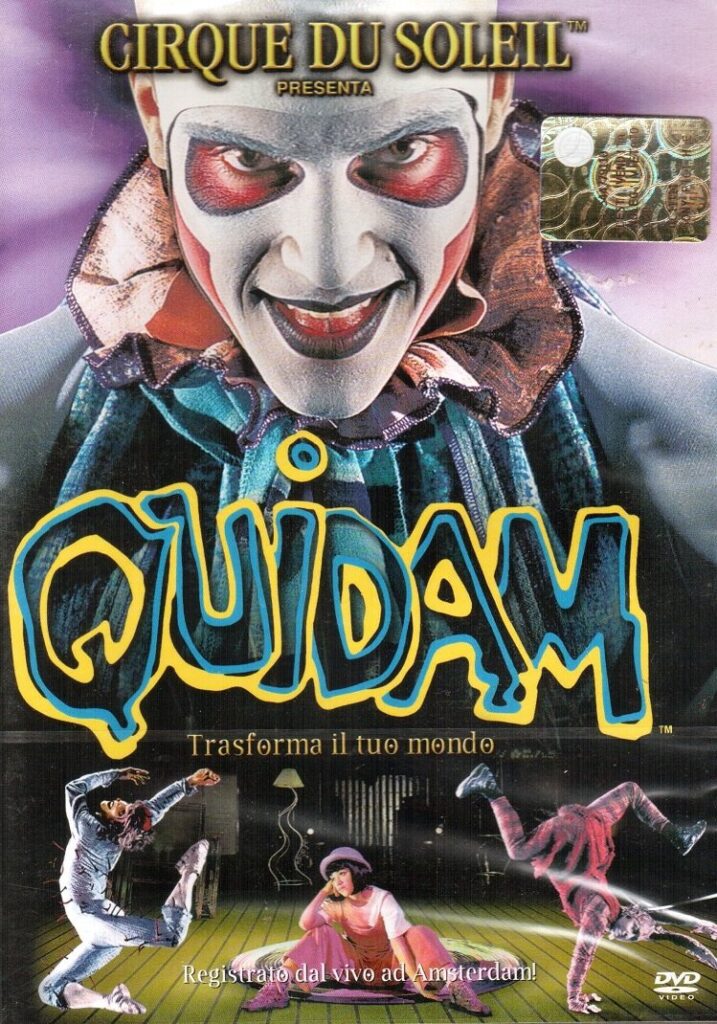
Quidam follows the journey of an alienated young girl (appearing my age at the time) whose family and familiar surroundings fade away after a mysterious figure appears at her door, ready to guide her on a phantasmagorical dream pilgrimage. Through absurdist and sometimes threatening displays, she is exposed to haunting visuals of intense human emotions that await her in the adult world.
The symbolism around identity, meaning, and belonging found within the sometimes alarming, sometimes funny clown acts and beautiful aerialist performances awakened something within me that would never go back to sleep. I claimed my family’s Quidam soundtrack CD and it did not leave my Discman for months as I skipped and meandered around the neighborhood, fantasizing about going on bizarre adventures of my own while trying to sing along to the “Cirquish” (nonsense language) tracks. Poring over the glossy pages of the souvenir program, I wished desperately that a mysterious muse would appear to whisk me away from mundanity.

Around that same time, as a baby gamer girl, I stole away as many hours playing The Sims as could be gotten away with. Introduced in the Livin’ Large expansion was my latest pretend boyfriend, Sunny the Tragic Clown. Summoned automatically in periods of depression via a framed portrait, he would arrive with weepy gusto and not take the hint to leave.
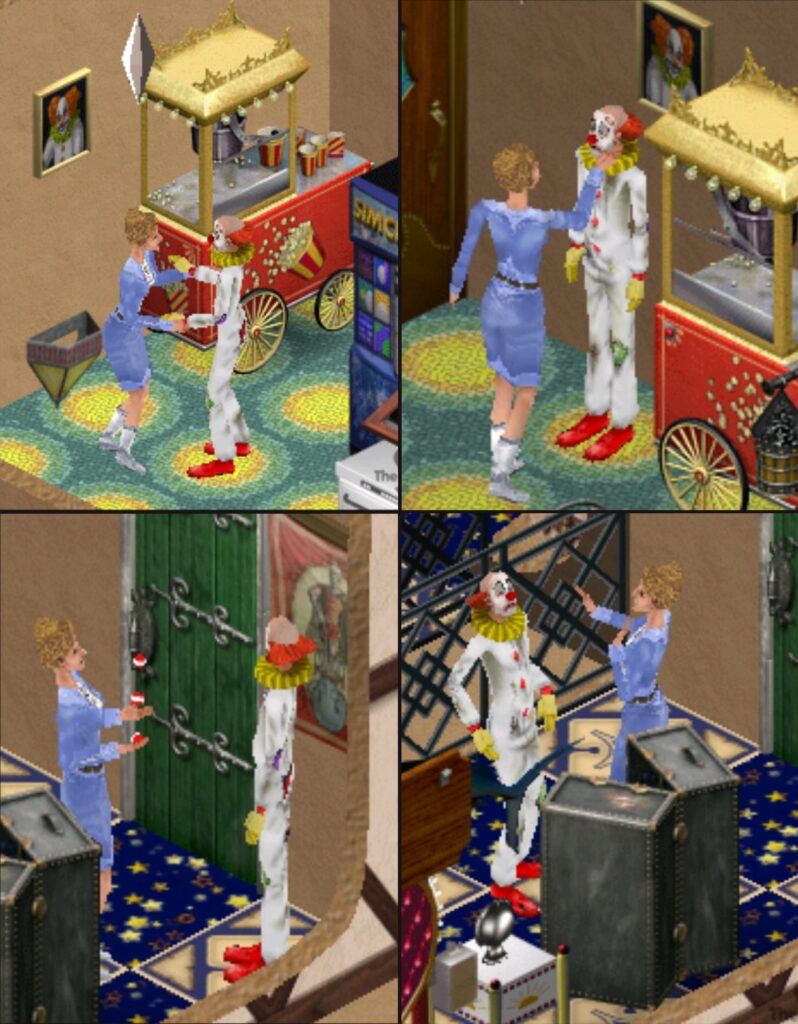
That was actually fine by me. I loved Sunny. He eventually made it into my dreams.
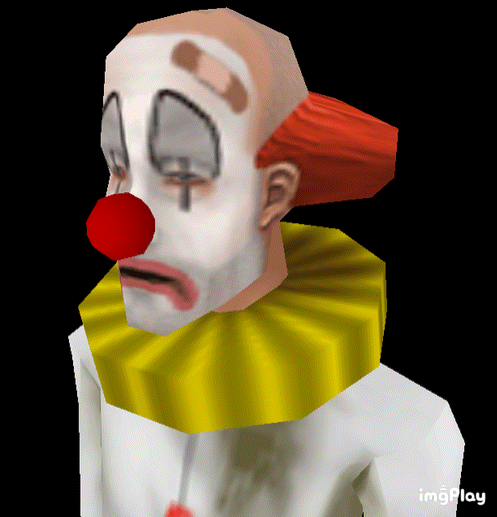
When it comes to film and television, what stands out to me the most was actually what I was not allowed to view. While wandering the sacred halls of Hollywood Video (R.I.P.), I made a point to sneak delicious peaks at the very forbidden horror section. The primary target of my gawking adoration was the Killjoy (2000) cover. He was so demonic, and I was obsessed. If my parents had their backs turned looking at romcoms, I was tiptoeing over to this fellow.
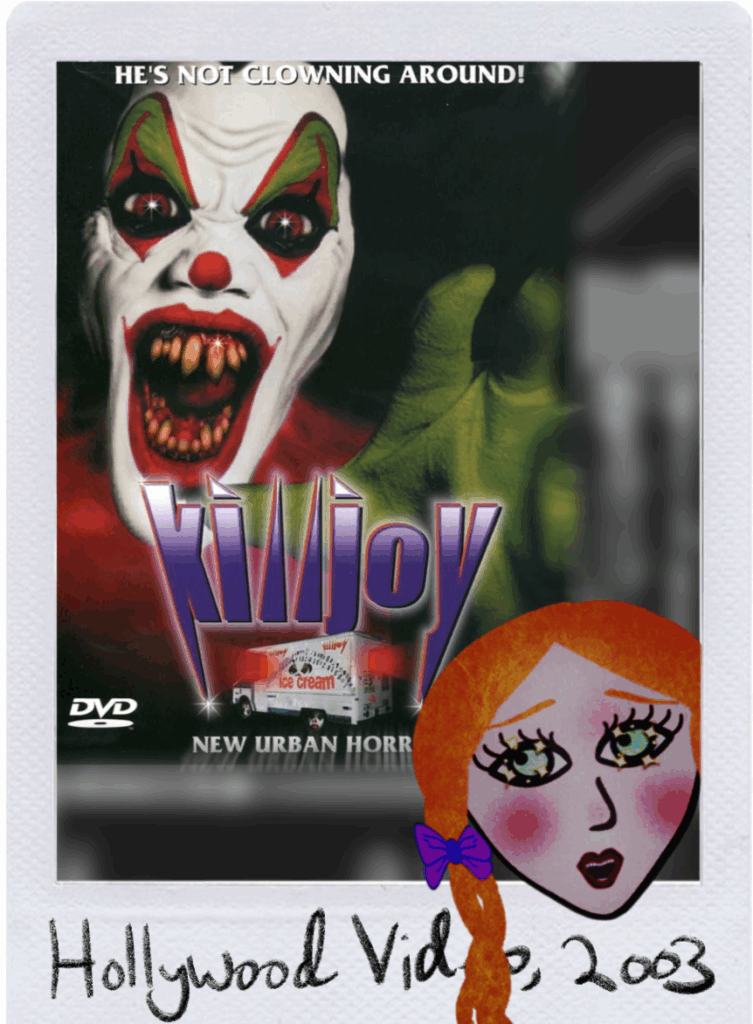
Something about the enfanged maw and garish colors really made my developing brain be like “Oh my god I want to smooch that clown IRL.”

Anyone with dalliances in emo or goth culture in the late aughts/early 2010s will remember this particular artist I was later introduced to: The painted phenom who is Emilie Autumn.

I’ll argue till I’m red in the nose that she is, at the very least, clown-adjacent—especially her stage show troupe The Bloody Crumpets.

To set the scene for you, the friend who facilitated this discovery was a young lady with whom I flounced around the suburbs in cloaks and played the American McGee’s Alice: Madness Returns game. We became diehard fans, saving up for merch and watching any footage we could find on early YouTube. Eventually, we obtained Asylum VIP tickets and got to chill with her in person when she did a show in the closest big city. Emilie Autumn kissed me on the cheek at the end of the meet and greet and I’ve never recovered.
As shy awkward teens, Emilie was an icon for us because we saw her as exceptionally transgressive and bold, embracing every artistic impulse with devotion to the bizarre. Within her performances and albums, she curated a pocket universe of Victoriana vaudeville populated by pretty girls in glittery makeup, enrobed in lingerie and the trills of her harpsichord. Even when loud and unpredictable, the performance space always felt safe. By exploring themes of mental illness and the rage and pain experienced under patriarchy, she offered freedom for her audience to explore their emotions and unlock new strata of creativity within themselves. These were territories very few artists at the time would venture into.
It’s hard to imagine my life had I not engaged with clowning ephemera consistently since childhood. Seeing performers online draw little hearts on their cheeks and sew glitzy jester hats brings me joy and hope that today’s youths still have a chance to commune with the circus gods. Send in the clowns!
VALENTINA SPEAKS WITH A REAL CLOWN
I had the honor of consulting with a professional adult clown performer for this article.
Maggie McMuffin (she/they), The Harlequin Heartthrob, was crowned Miss Coney Island 2023. A self-styled “clown girl, trash queen, and scatterbrained Capricorn,” she performs burlesque, sideshow, and more.
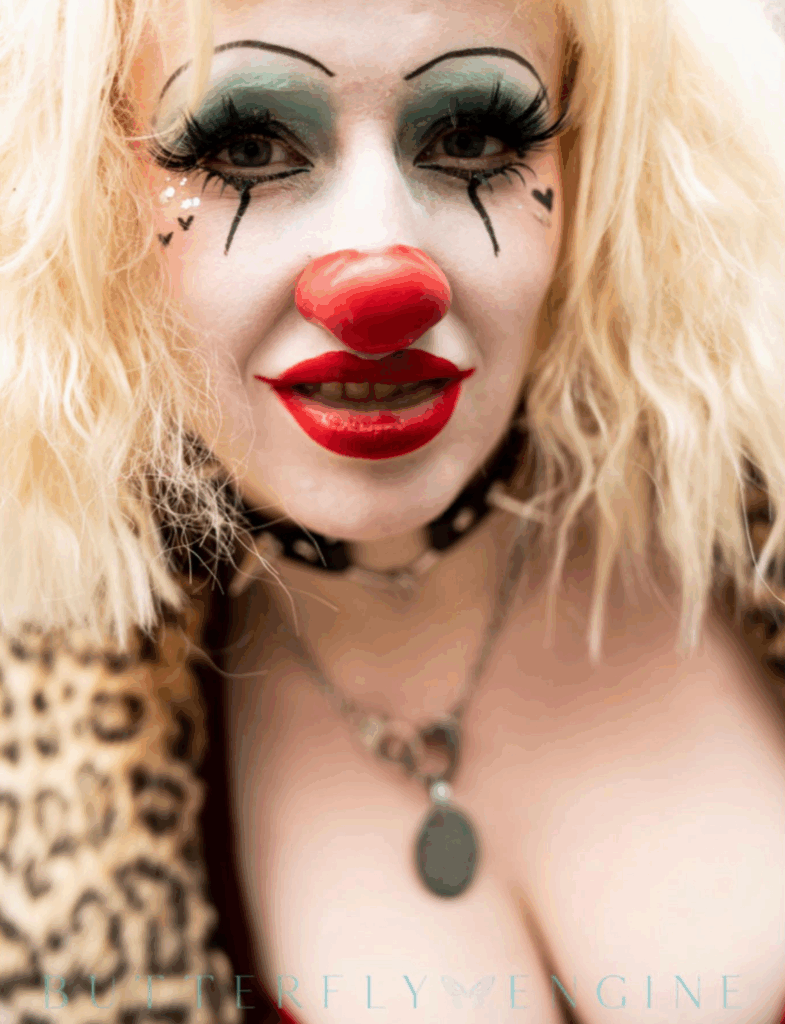
What inspired Maggie to get into adult clowning?
I’ve always liked clowns, but I was always uptight; one of those theater students who gets told “we can see the gears turning.” I admired the freedom of clowns and really had to push myself to live in the moment when performing. Clowning helped.
Maggie finds no difference between a “straight” audience and a clown’s audience. While she finds nightlife clown shows to bring extra chaotic energy, all audience members are equal to the clown upon first meeting. She finds absurdity to have healing power, and believes that getting weird can get you out of a tough rut—with the ritualistic quality of erotic clowning helping people unlock all sorts of emotions.
Most people envision joy and laughter, but if you can make people laugh, you can make them do anything. When people knowingly engage with clowns, they’re looking to be shaken up.
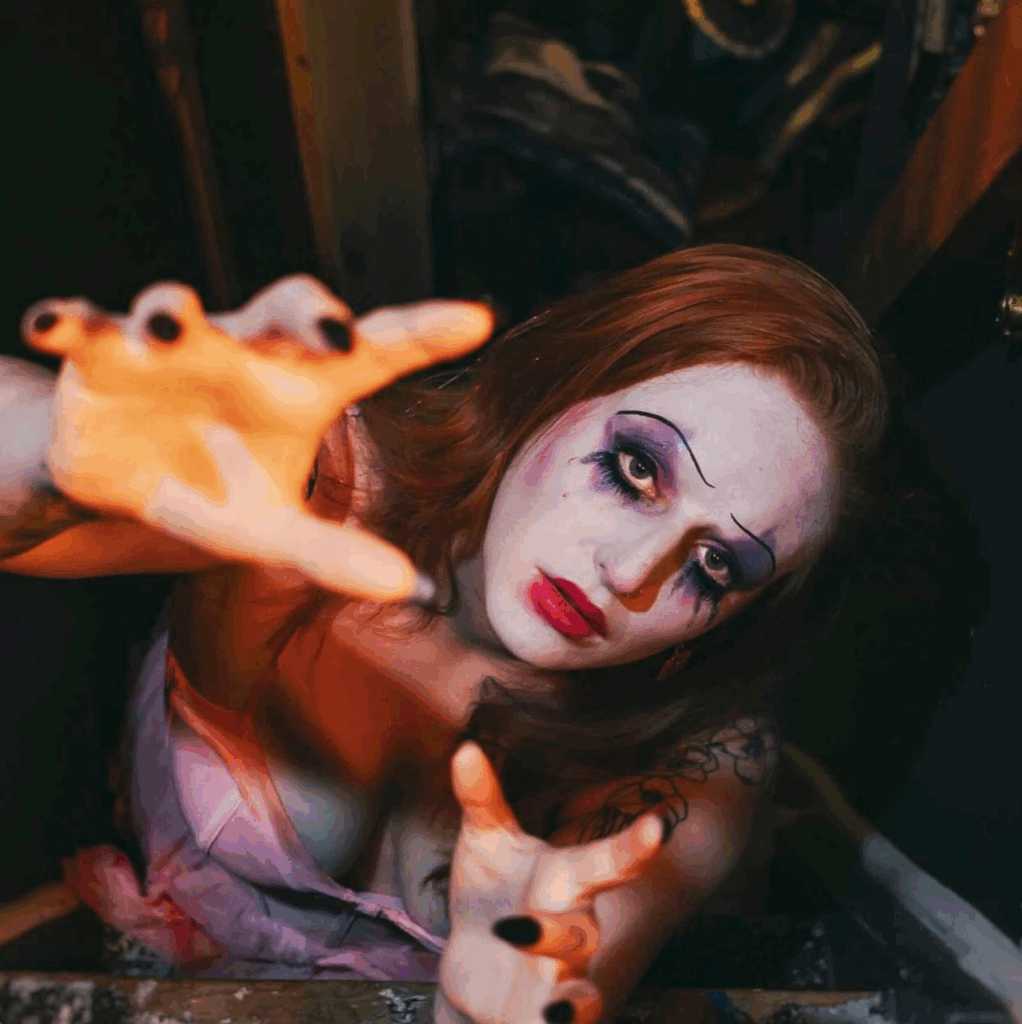
Explaining that while coulrophilia (general category of sexual attraction to the clown realm) can include other fetishes like food play, mess, power dynamics, and balloons, Maggie feels ultimately it’s all about honesty and play. Facing your fears and having no shame comes with the territory of clowning. Allowing that energy into erotic spaces creates opportunities for people to accept and pursue their desires. Some audience members find their freedom by actively engaging with the clown, living in the moment of connection, while others observe a group of clowns being so weird that they feel a sense of permission to commit to the bit as well.
I made a domme clown as a joke and she definitely unlocked those tendencies for me. Dominatrixie is bratty, mean, and unimpressed by everything. This was, at the time, nothing like my baby doll submissive self!
MAGGIE’S FAVORITE CLOWN
Their top pick is an unconventional one: Lynne Marie Stewart, who played Miss Yvonne on Pee-wee’s Playhouse.
Everyone in that cast is talented, but for so long you didn’t see women get to clown. [Miss Yvonne] got to be both extremely beautiful and vaguely unhinged. Her physical comedy is superb and it’s unfortunate that most of the comedy greats we remember are men.
Maggie also favors Arleen Sorkin for many of the same reasons … and because she gave us Harley Quinn!
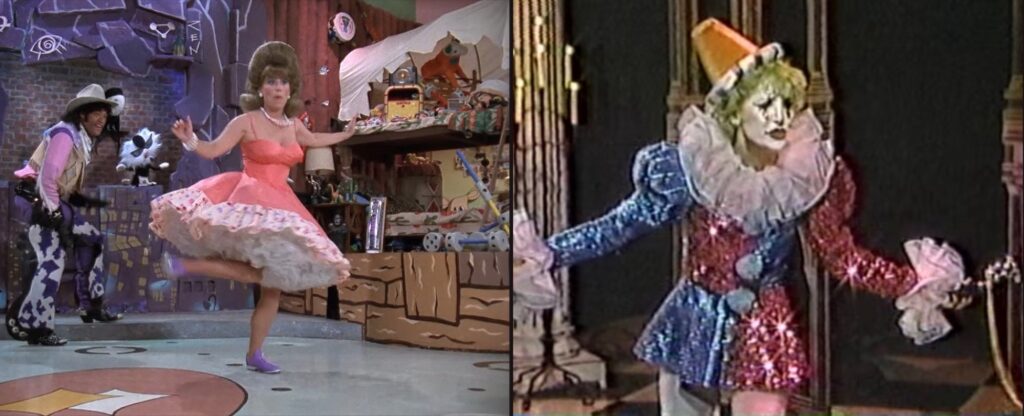
DESIRE AND PERFORMANCE
When Maggie McMuffin is on stage—she clarifies this goes for any performance, not just the obvious clown ones—it’s largely for Maggie. She always considers the performance quality, wanting the audience to be pleased with what they’ve gotten in return for their investment. But when she does any erotic performance:
I’m at the very least fulfilling my desire to impact people and give them a memory they’ll jerk off to for years. I put kinks on stage that aren’t my personal ones, but I’ve never depicted anything I wouldn’t at least try out if it made a partner happy. It’s for the big D: Desire. The galactic Desire. Let’s channel some energy into this room and get it nice and wet.
SOCIETY’S FOOL
Maggie relayed to Dirge that, especially in such an age of misinformation, subterfuge, and AI, they relish how clowns never lie.
Clowns are honest in everything they do and thus are unable to participate in societal smoke and mirrors. Each individual clown may not be telling you every single truth of the universe, but they will tell you their truth.
You can learn more about Maggie’s work via allmylinks.
The Curtain Closes on Clussydom
Clowns. Harlequins. Jesters. Fools. All denizens of the big tent of our hearts, and perhaps in the end, a stark portrayal of sincerity and humanity in times where we feel lost in the funhouse of artifice. Across time, costumery, and gender presentation, the erotic intensity illuminates our clusterfucks and delivers us from pretense. We will probably be obsessed with Hotclowns until the sun explodes and our human legacy shatters into oblivion with a big rainbow p o o f saturated with the din of moaning honks.
WORKS CITED
Márcia. “Quidam – Cirque Du Soleil.” Marciatoccafondo.com.br, Blogger, 26 Nov. 2009, www.marciatoccafondo.com.br/2009/11/quidam-cirque-du-soleil.html. Accessed 23 Sept. 2025.
“A Hunka Hunka Burns in Love.” The Simpsons, created by Matt Groening, season 13, episode 4, Fox, 2 Dec. 2001.
Daae, Valentina. Adaptation of a scene from The Simpsons, Fox. 10 Sept. 2025
Cirque du Soleil. DVD cover for Quidam. Italian edition. Amazon.
@peeweeherman. Video Clip from Pee-wee’s Playhouse, season 2, episode 6, “Tons of Fun.” X (formerly Twitter), https://x.com/peeweeherman/status/1262524968564256768
”Days of Our Lives.” Featuring Arleen Sorkin as Calliope Jones. NBC, early 1987. Clip available on YouTube, uploaded by Myles Langlois, 21 Oct. 2011, https://www.youtube.com/watch?v=n5L8A0QXtcw
The Sims: Legacy Edition. 25th Anniversary re-release, Electronic Arts, 2025. PC. Screenshot by author.
Daae, Valentina. Animated GIF including frames from The Sims: Legacy Edition and original artwork. 7 Sept. 2025.
Daae, Valentina. “Licentious Clown.” 22 Sept. 2025.
Daae, Valentina. Adaptation of a scene from The Simpsons, Fox. 10 Sept. 2025
Daae, Valentina. “I’m Going to Fight this Clown.” 22 Sept. 2025.
Killjoy. Directed by Craig Ross Jr., Full Moon Features, 2000. DVD cover.
Daae, Valentina. Collage combining original drawing and DVD cover of Killjoy (2000). 9 Sept. 2025.
Zuppello, Suzanne. “’Killer Clowns’: Inside the Terrifying Hoax Sweeping America.” Rolling Stone, 29 Sept. 2016, www.rollingstone.com/culture/culture-news/killer-clowns-inside-the-terrifying-hoax-sweeping-america-129505/.
Staśkiewicz, J. “The Queering Relief of the Humor in the New Burlesque.” Whatever. A Transdisciplinary Journal of Queer Theories and Studies, vol. 4, no. 1, June 2021, pp. 187-18, doi:10.13131/2611-657X.whatever.v4i1.113.

